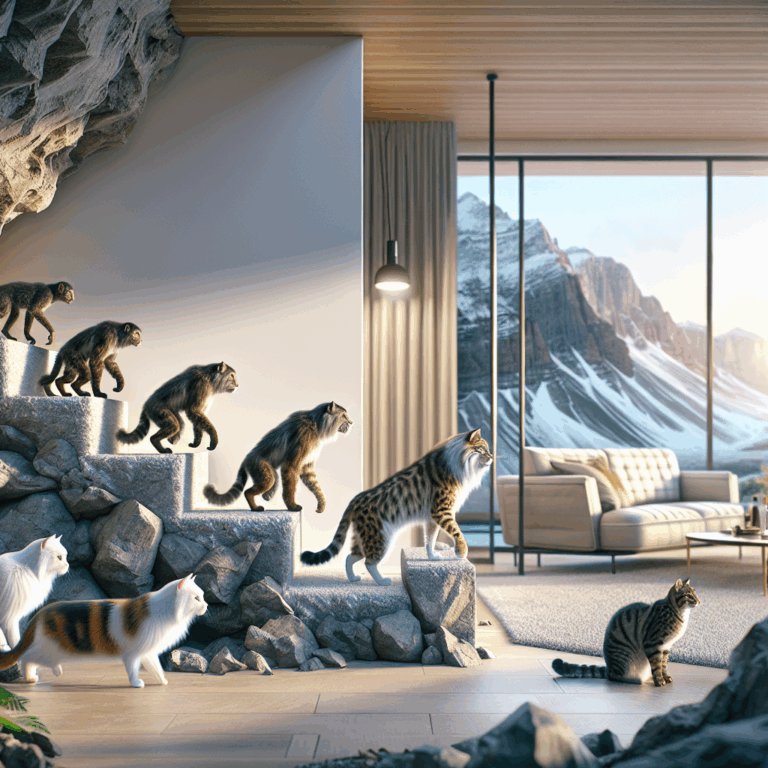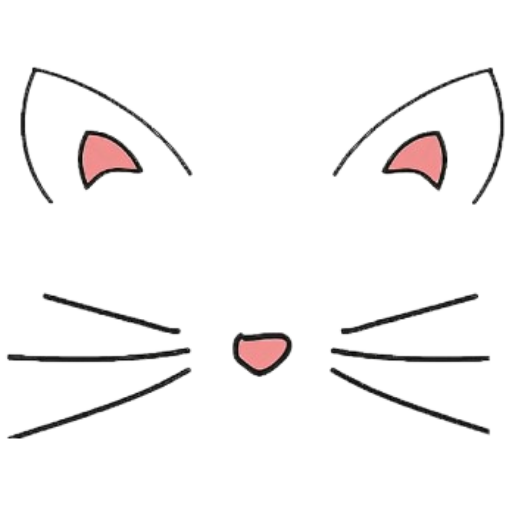The Evolution of the Domestic Cat: From Wild Hunters to Beloved Companions
- No Comments
In the shadowy recesses of ancient history, cats were once formidable hunters, stalking the wild landscapes of the Old World with a silent grace. Today, these majestic creatures have evolved into some of the most cherished companions in human households. The journey from wild hunters to domestic pets is a fascinating tale that intertwines with human history, spanning thousands of years and continents.
The story begins in the Near East, where the African wildcat (Felis lybica) is believed to be the progenitor of all domestic cats. These solitary creatures, driven by their instinct to hunt and survive, began to frequent human settlements around 9,000 years ago, drawn by the abundance of rodents that thrived on the grain stores of early agricultural societies. This mutually beneficial relationship laid the groundwork for the domestication of cats. Humans appreciated the natural pest control, while cats found a reliable food source.
As civilizations flourished, so did the presence of cats. In Ancient Egypt, they were revered and worshiped, often depicted in art and associated with the goddess Bastet, a deity of home, fertility, and protection. Cats were considered sacred, and harming one could result in severe penalties. This reverence for felines facilitated their spread throughout the Mediterranean as they accompanied traders and explorers, serving as both companions and protectors of grain cargo from vermin.
The Roman Empire further disseminated cats across Europe. As the empire expanded, so did the reach of these agile hunters. However, it wasn’t until the Middle Ages that cats’ fortunes waned. In some parts of Europe, they became associated with witchcraft and the supernatural, facing persecution during times of plague and superstition. Yet, their usefulness in controlling vermin populations ensured their survival and gradual rehabilitation.
The Renaissance marked a turning point in human-cat relationships. As societies began to value science and rationality, the role of cats in pest control was once again appreciated. By this time, cats had become entrenched in European households, their presence accepted and even celebrated. This period also saw the emergence of cats in literature and folklore, further cementing their place in human culture.
The 19th and 20th centuries heralded the era of selective breeding and the establishment of cat breeds, with enthusiasts celebrating the diverse appearances and personalities of these animals. The rise of urbanization and apartment living contributed to the increased appeal of cats as pets, due to their independent nature and adaptability to smaller living spaces.
Today, cats are one of the most popular pets globally, cherished for their companionship, mysterious allure, and occasional aloofness. They are subjects of extensive scientific research, beloved internet stars, and continue to captivate hearts and minds. Modern cat owners celebrate their pets’ unique personalities and quirks, often viewing themselves as caretakers rather than owners, acknowledging the profound mutual relationship that has evolved over millennia.
In this contemporary era, adopting a cat is more than inviting a pet into one’s home—it’s embracing a slice of history, a connection to the ancient past, and a testament to the enduring bond between humans and these enigmatic creatures. As we look to the future, the story of the domestic cat continues to unfold, shaped by the ever-changing landscape of human society and the timeless nature of feline grace and independence.

In the shadowy recesses of ancient history, cats were once formidable hunters, stalking the wild landscapes of the Old World with a silent grace. Today, these majestic creatures have evolved into some of the most cherished companions in human households. The journey from wild hunters to domestic pets is a fascinating tale that intertwines with human history, spanning thousands of years and continents.
The story begins in the Near East, where the African wildcat (Felis lybica) is believed to be the progenitor of all domestic cats. These solitary creatures, driven by their instinct to hunt and survive, began to frequent human settlements around 9,000 years ago, drawn by the abundance of rodents that thrived on the grain stores of early agricultural societies. This mutually beneficial relationship laid the groundwork for the domestication of cats. Humans appreciated the natural pest control, while cats found a reliable food source.
As civilizations flourished, so did the presence of cats. In Ancient Egypt, they were revered and worshiped, often depicted in art and associated with the goddess Bastet, a deity of home, fertility, and protection. Cats were considered sacred, and harming one could result in severe penalties. This reverence for felines facilitated their spread throughout the Mediterranean as they accompanied traders and explorers, serving as both companions and protectors of grain cargo from vermin.
The Roman Empire further disseminated cats across Europe. As the empire expanded, so did the reach of these agile hunters. However, it wasn’t until the Middle Ages that cats’ fortunes waned. In some parts of Europe, they became associated with witchcraft and the supernatural, facing persecution during times of plague and superstition. Yet, their usefulness in controlling vermin populations ensured their survival and gradual rehabilitation.
The Renaissance marked a turning point in human-cat relationships. As societies began to value science and rationality, the role of cats in pest control was once again appreciated. By this time, cats had become entrenched in European households, their presence accepted and even celebrated. This period also saw the emergence of cats in literature and folklore, further cementing their place in human culture.
The 19th and 20th centuries heralded the era of selective breeding and the establishment of cat breeds, with enthusiasts celebrating the diverse appearances and personalities of these animals. The rise of urbanization and apartment living contributed to the increased appeal of cats as pets, due to their independent nature and adaptability to smaller living spaces.
Today, cats are one of the most popular pets globally, cherished for their companionship, mysterious allure, and occasional aloofness. They are subjects of extensive scientific research, beloved internet stars, and continue to captivate hearts and minds. Modern cat owners celebrate their pets’ unique personalities and quirks, often viewing themselves as caretakers rather than owners, acknowledging the profound mutual relationship that has evolved over millennia.
In this contemporary era, adopting a cat is more than inviting a pet into one’s home—it’s embracing a slice of history, a connection to the ancient past, and a testament to the enduring bond between humans and these enigmatic creatures. As we look to the future, the story of the domestic cat continues to unfold, shaped by the ever-changing landscape of human society and the timeless nature of feline grace and independence.


